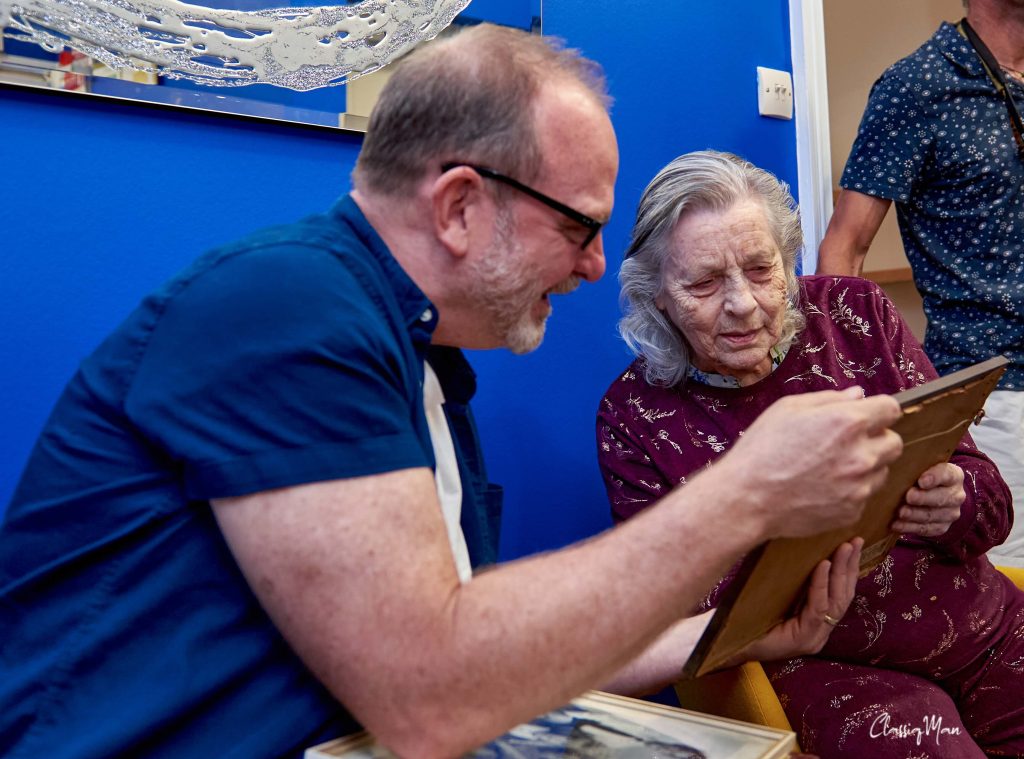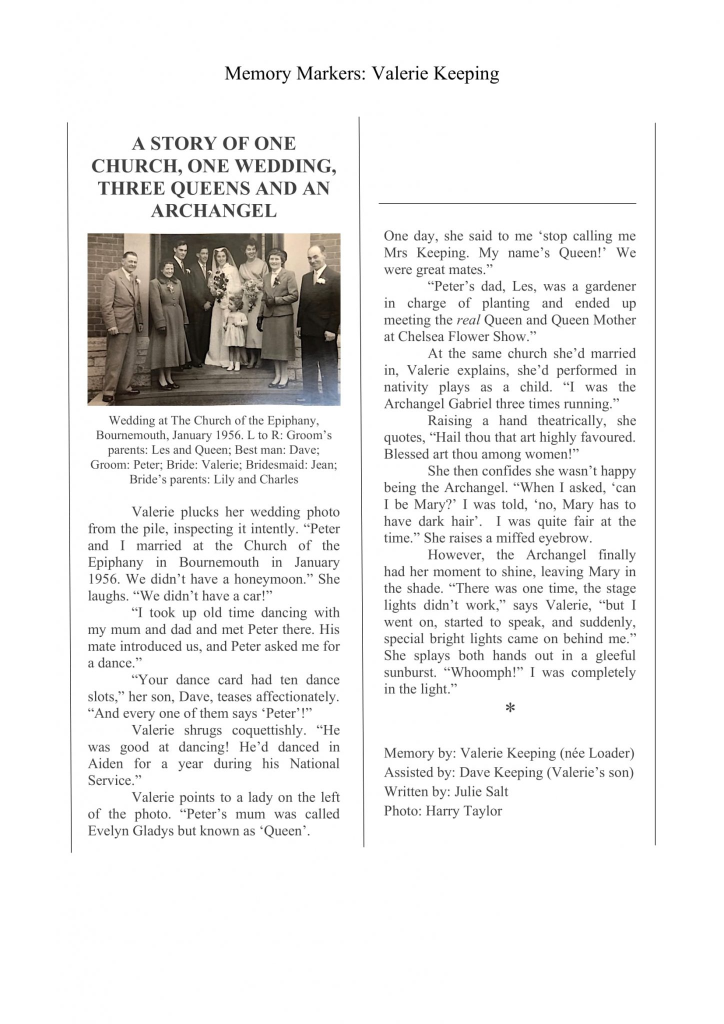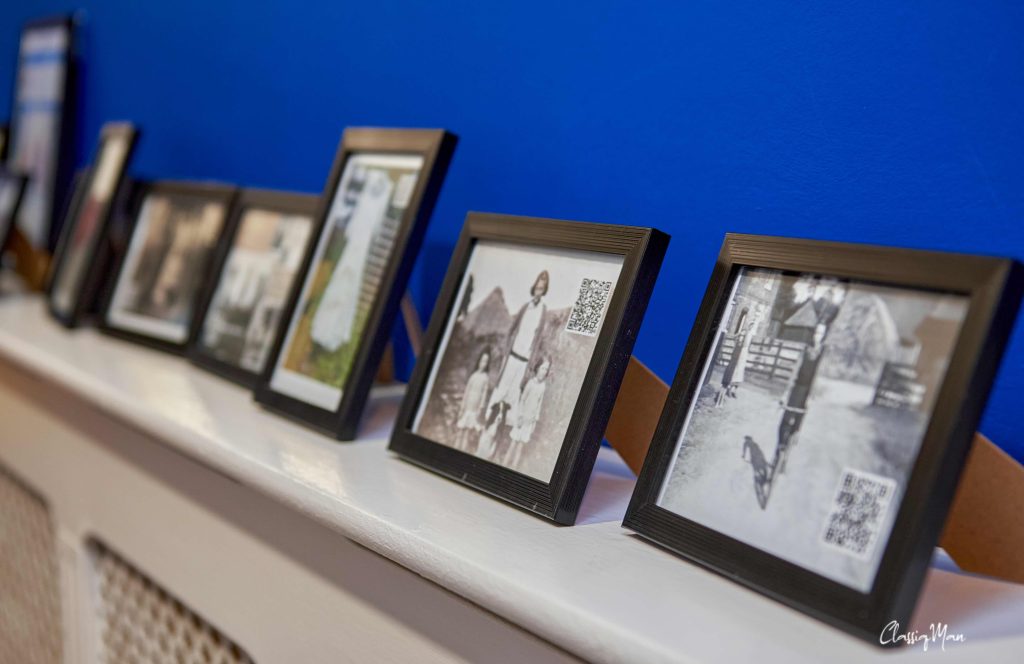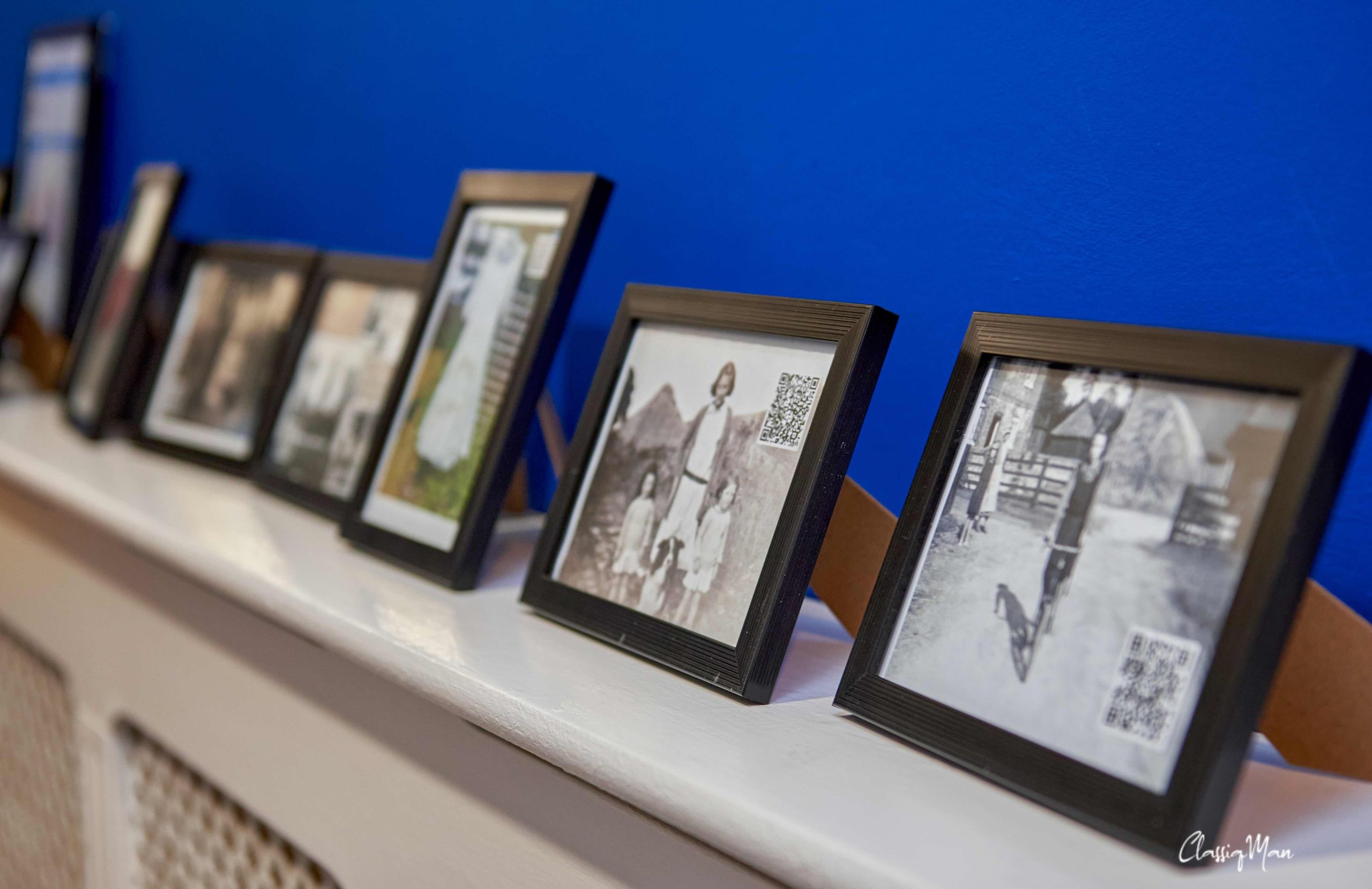Creative writing helping people living with memory loss.
Julie Salt
As a carer for my elderly mother, I thought I’d had a bellyful of old people. However, Bournemouth University’s outreach project Memory Markers revealed to me a world of unexpected creative writing opportunities, inspired by working with elderly people living with memory loss.
“It was my mum’s idea,” Dr Brad Gyori, the project’s leader told me. “She suggested we could capture the memories of people in care homes and write them up into stories. That way they’ll never be lost.”
He went on to say something about ‘QR codes’, at which point I tuned out, but I loved the idea of this project, involving students from Bournemouth University’s Master’s course in Creative Writing and Publishing, as well as alums, like me, and local care homes.

I was nervous before I first met Valerie, the resident in a home whose stories I was to write up. I wasn’t sure what to expect. However, she and her son, David, quickly put me at ease as we sifted through their old photo albums over a cuppa in her room.
“Do you remember this one, Mum?” David asked, holding up a faded picture.
Valerie chuckled. “Oh, that’s our old house. You and I saw it when it when it was for sale. It was littered with dead bats! But with a storm howling outside, you said, ‘Mum! It’s the classic haunted house!’”
As a writer, I couldn’t resist this image and encouraged Valerie to reminisce more. It was lovely hearing her happy memories about renovating the house, Sundays baking with her mum and picking blackberries for wine. I realised how valuable this project was to the elderly participant, simply talking about their lives.
I could easily imagine the smells, sounds, colours and textures with Valerie’s spirited descriptions. So, my story, ‘Bats, Baking and Blackberry Wine’ was born. Written in the voice of an omniscient narrator, my authorial intention was to travel from ‘haunted house’ to family home, employing all the senses. It was a gift to write it.
My second story came from Valerie’s black and white wedding photo, in which she described numerous family members. Pondering how to best capture these disparate narratives, I finally decided to create a 1950’s newspaper story, both in language and layout, as if written from an interview, using reported speech and narration. It worked well.

Finally, childhood photos of Valerie and her siblings elicited an amusing post-war tale about her brother leaping into the stream in Bournemouth gardens.
“He disappeared! It was deeper than he thought!” Valerie laughed.
Keen to capture her sense of humour and language, I felt a poem would work for this story. I attempted her conversational rhythm through meter and expanded her phrase ‘…which is nice’ as asides. It was fun to write, and later, to read.
I sent first story drafts to Brad, who returned helpful editorial notes. The other authors and I then recorded audio of ourselves reading our work. At last, Brad’s talk of ‘QR codes’ made sense; now anyone could listen to, as well as read, our Memory Markers, making them accessible to all.

Our stories, photos and QR codes were framed on a wall in the care home when the other authors, Chiamaka Okwuenu, Laila Lock, and I arrived to give readings to the residents, families and staff members. The opportunity to perform aloud to our intimate care-home audience was a special experience. Our work was received with warm appreciation and some, occasionally, poignant comments.
“Who told you all that?’ said Valerie, looking foxed, as I read out her stories.
“You did!” I smiled, wanting to give her a hug.

I went home feeling elated to have taken part in something so worthwhile. Whilst igniting my own creative spark, I learnt how much it benefits people with memory loss to rekindle their past, and its importance for them to feel socially valued and included. It’s a beautiful way for us, as writers, to connect and use our skills. It’s also left me keener to probe my own mum for her precious memories, while I still can.
